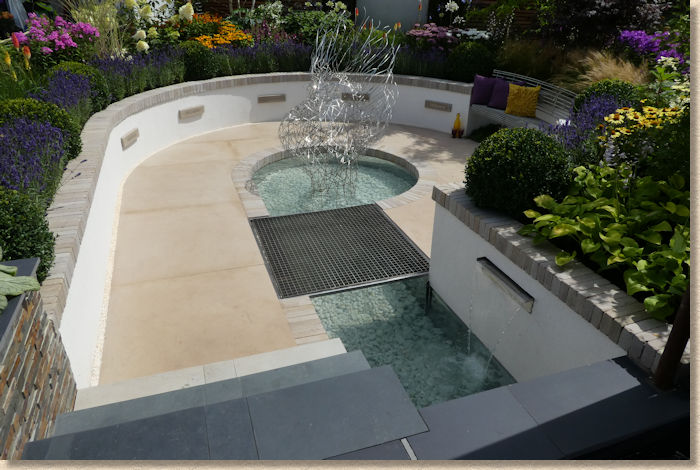Tatton RHS Flower Show 2017
Is it really three years since I last managed to wangle me way in on Press Day at the RHS’s premier northern outing at Tatton ? Mind you, calling it Press Day is a bit grand, as that seems most to comprise me and someone from the Knutsford Journal, along with half a dozen Press Pool Togfers. It’s definitely not the scrum that takes place at Chelsea or Hampton Court, and that manages to keep the pesky soap-opera and reality TV zelebrities at bay, so no distractions from what’s actually on show.
And it’s a glorious day….or at least it starts out glorious and then gradually clouds over a bit. Tomorrow, first day for the civilians, doesn’t look anywhere near as promising. To avoid the traffic which, even on a quiet day at Tatton, is a bit of a bloody nightmare, I roll up on the trusty Triumph and am desperate to peel off the leathers as soon as a place to park near the Tradesman’s entrance is spotted. It can get a tad warm in bike gear if you don’t keep moving.
One of the most appealing things about Tatton, and one I’m truly delighted to see has been maintained during my absence, is the plethora of ‘other’ gardens that are featured. This is the original home of the ever-popular Back-to-Back gardens, and they’re still here, as are competition gardens for Young Planting Designer and the BALI-supported Young Landscape Contractor, and the Future Spaces Gardens, with the aim of considering how gardens might adapt to changes in the natural and urban environment.
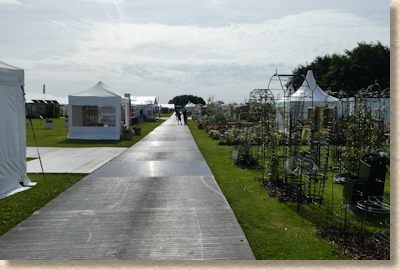
What was trendy and what missing? The quantity of riven Indian sandstone was at an all-time minimal, and mostly restricted to trade stands. No concrete block paving at all; and no resin-bound surfacing , which was all the rage the last time I was here. Bespoke concrete castings and some resin-flooring, more normally seen indoors suggest that designers are scanning around looking for something new. Natural materials seemed popular, with clay pavers , both new and "re-purposed", let’s call them, and bits of reclaimed flags, setts and cobbles, but the most popular choice seemed to be self-binding grave l of the sandstone variety, which cropped up on quite a few gardens.

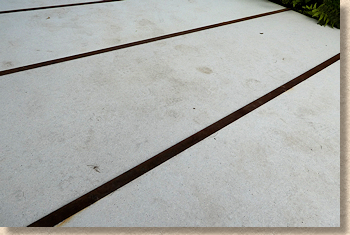
Rusty steel is de rigeur on all sorts of projects just now, and is right on the precipice of becoming naff due to overuse, in much the same way that cheap riven stone did a decade ago. Noticeably less of the ‘heritage’ styling than in previous years, too, with a much more forward-looking and, dare I say it, optimistic feel. I had expected to see much more of the porcelain and the honed flagstones that are the hot things for those with a generous budget just now, but very little was on show.
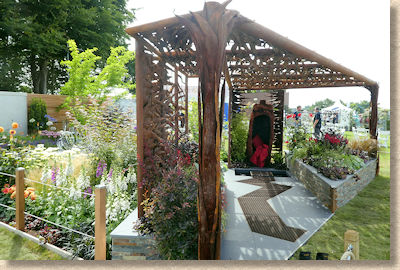
Apparently, one of the show gardens did have a secluded patio of porcelain paving, but it was so secluded, it was impossible to see from the sidelines and you had to be one of the select few invited onto and into the garden to actually see it. Stupid idea! By all means have a secluded, private patio area within a garden design, but have the common sense to make one side open so it can be viewed by the show visitors. I’ll bet the suppliers of all that not-inexpensive porcelain are delighted with the exceedingly low profile given to their product!

Whilst Tatton, and the other big Flower/Garden shows, are often a key indicator for new and emerging trends, what they don’t do terribly well is police the installation standards. Judging is based primarily on aesthetics: does it look "nice"? It’s unfair to expect horticulturalists to be thoroughly familiar with the ins and outs of what’s expected of a top quality paving or surfacing installation, but then, if we accept that any decent and usable garden will, in almost all instances, have some paving or surfacing to make all that greenery accessible, then shouldn’t judging include an element for technical competence? I would like to think so, but, as always seems to be the case with these shows, some e-bloody-normous examples of naughtiness slip through the net.
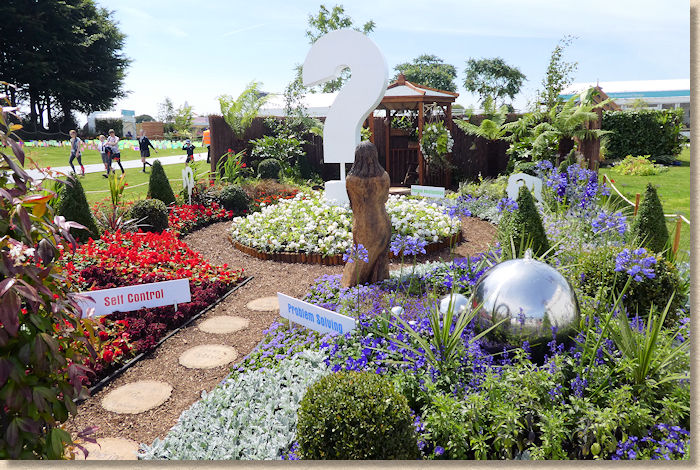
OK - no-one is perfect. Judging is a time-consuming and demanding task, so things will, inevitably, be missed. But when these errors, mishaps, cock-ups, bodges – call them what you will – are then given glittering medals, this sends out the message that such shortcomings are actually acceptable.
Over the 20-odd years I’ve been nosing around these shows, it’s become undeniably obvious that gardens built by paving professionals reach a higher standard of installation than that achieved by non-specific landscapers or gardeners. That’s only to be expected, I hear you cry, and it is, but then why are gardens in competition that feature basic construction errors being awarded prizes?

A garden is a combination of hard and soft landscaping. The soft, green stuff makes it look pretty, and the hard, solid stuff makes it usable, makes it suitable for amenity. You can’t have a garden without both elements, so let’s judge each element equally. As I keep saying over and over again, a garden without paving is not a garden: it’s a field.
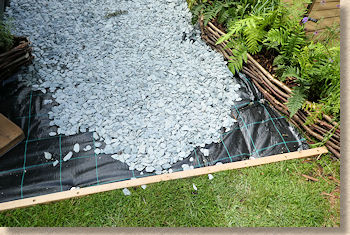

It would be easy, too easy, to publish a gallery of no-nos spotted amongst the competing gardens at Tatton, but does that actually help anyone? I prefer to celebrate the positives, the instances of genuine skill and craftsmanship that, all too often, get overlooked because there’s a pretty flower nearby which distracts attention.
So congratulations to Gold Medal winners Actual Landscapes for their "Facing Fear, Finding Hope" garden for the Crohn’s and Colitis charity, and John Everiss working with Peter Gregory Landscapes for the "Slow The Flow" garden highlighting water conservation and SUDS. Both gardens offered exemplary hard-landscaping installations and thoroughly deserved the accolades. Maybe the Judges do take note of the hard stuff, after all!


Silver-Gilt for the Arley's Thyme To Retreat garden built by Paul Gibbons from Macclesfield seems a little parsimonious. I couldn’t fault the paving – they even used an aging compound on the reclaimed yorkstone flags’ mortar pointing to ensure it looked the part! – so maybe the greenery cost those few points needed to cross the threshold to the Golden Land. I’m not qualified to comment, so I bow to the superior knowledge of the RHS judges.

Meanwhile, one of the most unmissable big Future Space gardens featured relatively expensive and luxurious natural stone flags, laid on spot bedding, with reflective staining showing even at this early stage, and then jointed with a brush-in compound that had stained huge tracts of the stone, most noticeably at the joints. Maybe they can ‘picture frame’ their lowly Bronze award and ‘reflect’ on how they could improve their paving installation skills.
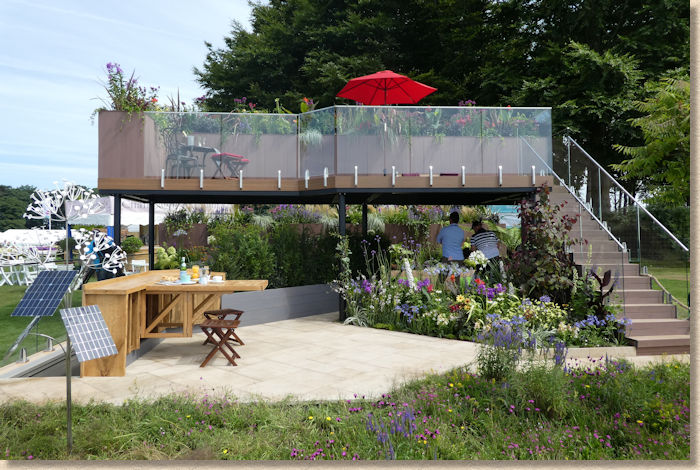
The "From a Different Angle" garden from senior university students at Reaseheath suffered from a problem similar to that of the "For The Love Of It" garden mentioned above. There was a huge part of the garden that just wasn't visible. The front approach featured a large and pretty bloody boring triangular expanse of 900x600mm (or maybe 840x560mm) Kandla Grey riven sandstone flags - yawn - but tucked away in that far corner was some sort of sail-like shade beneath which a selection of worn-out students lazed and lunged, but we visitors couldn't see anything from the public area, and it didn't seem that any of the students wanted to interrupt their nap by inviting anyone in for a closer inspection.

Plenty more to see, far more than can really be given coverage in a summary review such as this, but here are a few of the gardens that managed to catch my eye....
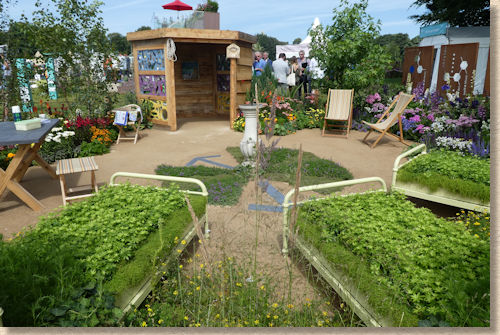
Weird beds of planting on a circular plot with self-binding garvel as the homegenous none-too-challenging surface.
Ula Maria's Baltic childjhood inspired idea of the ultimate outdoor office with gorgeous quarry tile styled clay pavers from Weinernberger.
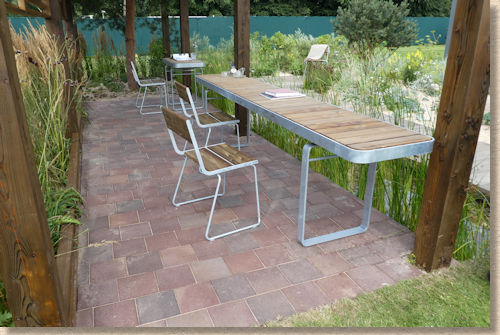
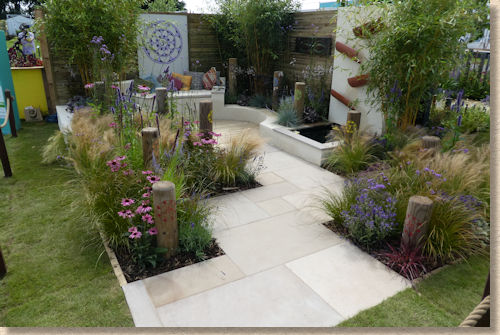 Moris &' Ball's Relaxation Meditation back-to-back garden
Moris &' Ball's Relaxation Meditation back-to-back garden
Simple paving, functional, well-installed but no demanding attention, as it should be in a serene area.
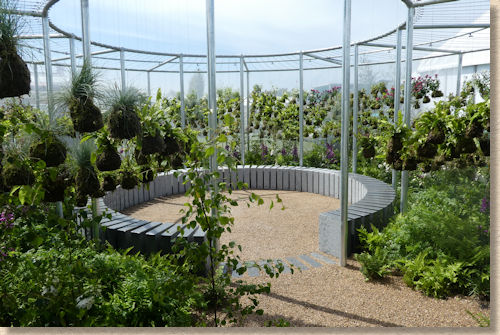
The Bruntwood Space
When it comes to points of specific interest to those interested in hard landscaping, two items really stood out. The exposed aggregate concrete beams used to form the walkways for the Slow The Flow water conservation show garden, and the Cheese Stone, discreetly tucked into the Arley’s Thyme To Retreat back-to-back garden.
The concrete beams are 140x125mm beams, either 2m or 3m in length, of reinforced concrete which has been treated with a retarder and then washed to expose the glinting 10mm Cornish Granite aggregate. The degree of exposure varies from beam to beam (specially made by Pickford’s in Chorley) giving a more authentic look, and beams are placed alongside one another, seven at a time with 5mm open joints, to give metre-wide paths that bridge dry channels and give elevation to a garden that’s stuffed to the gunwales with the latest think in SUDS sensitive design.
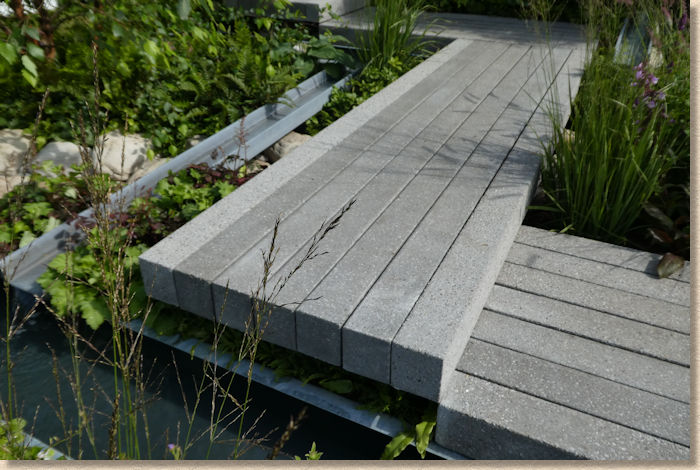
The cheese stone is a real find, spotted amongst salvaged items from nearby Arley Hall by contractor, Paul Gibbons of Macclesfield. The circle and cross are actually shallow drainage channels that direct the excess whey out of the cheeses held in place by wooden brackets positioned in the two holes on each side. A genuine piece of Cheshire’s local history, plucked from obscurity and now embedded as a ‘feature’ flagstone in the garden path of a memory-rich evocation of our disappearing past.

For the Young Contractors, I thought the standard was generally good, but some of the inevitable inexperience made me smile.
The use of god-awful Rainbow flagstones in the "Let ‘em Grow Urban Retreat" is a classic novice error. It’s a dazzling stone, very vivid, very colourful, very busy and eye-catching, but also very porous and very prone to turning green with algae overnight. It’s the sort of stone you only ever use once in a densely planted, lush, almost tropical garden setting such as this.
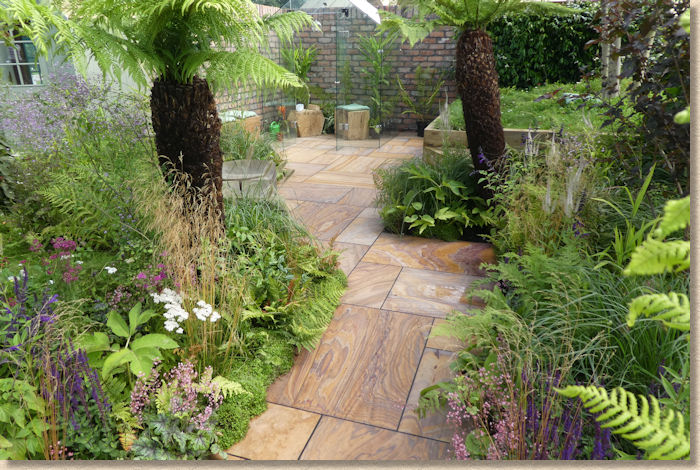
Lovely reclaimed/salvage clay brick as paving in the "Arrange:Rearrange" garden, but are they proper damp/frost resistant pavers? I thought so at first, then wasn’t quite as sure, and even now, I’m not 100% convinced. No jointing between them, either, but I’ll ignore that to look at the interesting dry-built ashlar stone wall almost hidden away at the back. That is a feature which deserves greater prominence.
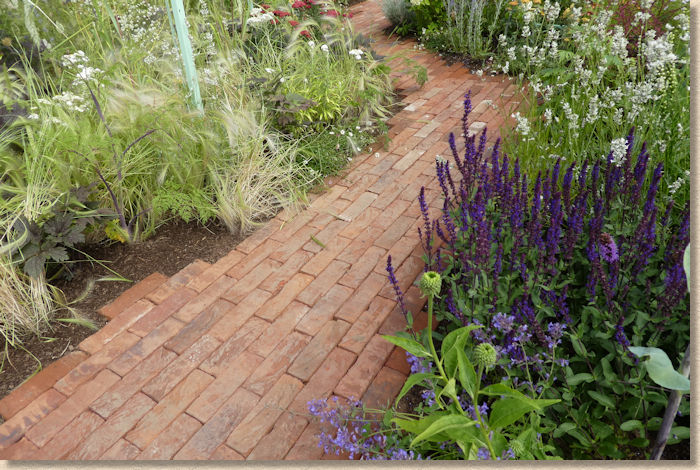
"Chaos to Coastline" is the garden that took the prizes, and it certainly seems a more mature, more considered garden with innovative ideas but, and this is purely personal taste, it didn’t do a lot for me. It had that look of a garden someone ‘buys in’ rather than a garden that’s evolved to reflect their own personality. The paving was everything the Rainbow stone isn’t: subdued, understated, almost unnoticeable. I stood and stared and tried to find something in the hard scaping that piqued my interest but…..no. Now, that’s not necessarily a bad thing. Perhaps the brief is to focus on the outdoor shower or the big shady pergola thingy or even the classy planting, and have the paving be basic and functional, which is fine, if that’s what you want, and there’s no doubt the landscaper and the plantsbod satisfied their brief, but I just wish there was something, anything, about which I felt able to wax lyrical. I reckon that says more about me and my tastes/prejudices than it does about what was, after all, a high quality build.
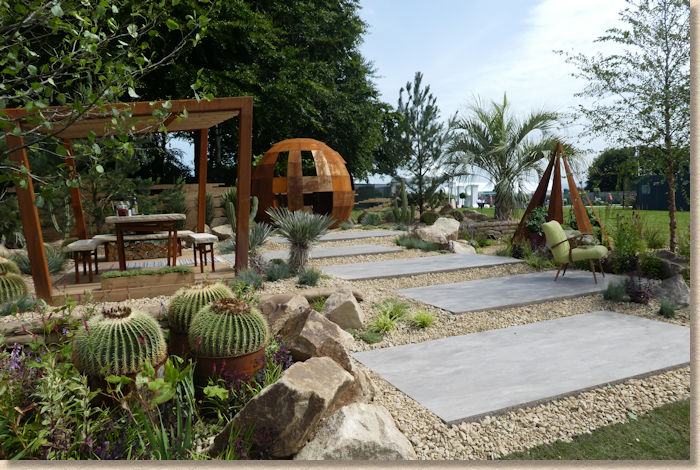
In summary, yhe number of genuinely showy Show Gardens seems lower than I recall. They used to extend all around the Egerton Clump of trees, but now they are clustered to one side of it and number just six in total. Is this Austerity come home in what was Gideon Osborne’s constituency up until last month, or is it more to do with the perceived lack of customer response to what is a considerable financial and personal investment that previous exhibitors have reported? The good gardens still command the much-desired Wow Factor, but there are fewer of them. Given that these gardens are the real entertainment at a show such as this, will the Great British Public be happy stumping-up 22 to 28 quid to see a sprinkling of showstoppers amongst a sea of peripheral merchandise? They’ve accepted it at Chelsea, thanks to the Flight of the Venal Bankers, and I’ve no doubt they’ll lap it up here at the RHS Outing for Northern Folks.
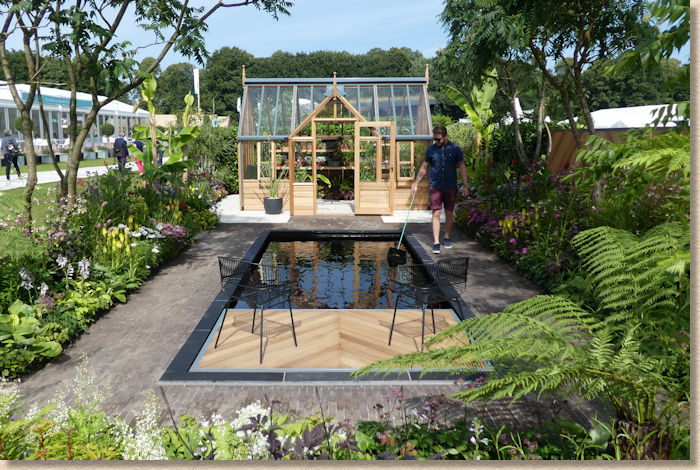
Tatton is, more than any other RHS show, far greater than the sum of its parts. There’s so much opportunity for the young and ambitious, whether they are the Primary School kids from Glazebury or Croft, villages neighbouring my own, students learning a horticultural trade at the ever-supportive Reaseheath College near Crewe, or young contractors and designers, as seen in the BALI-supported competition. This one show reveals the entire pathway for garden design, from germination at primary school through to the full flowering of a show garden. Pretty damned impressive – I’m so glad I came back!

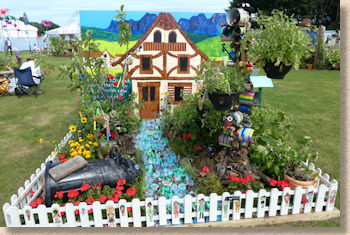
How else could I finish off other than with another view of what was, without any doubt, the best garden at the show - Rory Tompsett and Peter Holland of Actual Landscapes with their delicious Facing Fear: Finding Hope - a garden that will live long in the memory of all that experienced it.
